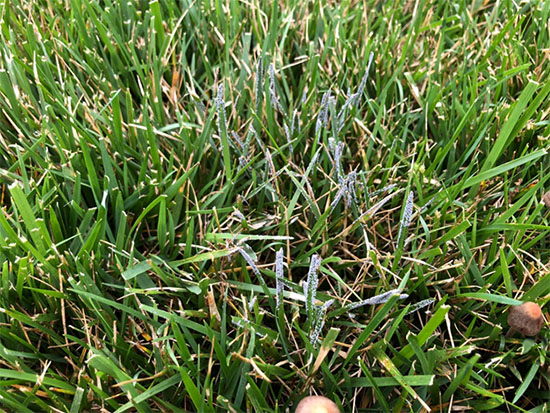Issue 11, July 16, 2018
Slime Mold on Turfgrass
The recent weather has set up perfect conditions for slime molds on turfgrass. Warm, wet, overcast weather helps slime molds to find their way onto turfgrass surfaces where they feed on microorganisms and other decaying organic matter. The primitive fungi can come in many colors from orange to white, blue or gray. The bright color can be seen in the early onset and then rapidly changes to dark patches.

Slime mold on turfgrass.
Slime molds are unique in that they are not infectious and therefore do not harm the turf. The also remain for a short period of time, generally 1-2 weeks. Masses of spores can cover the leaf blade reducing photosynthesis but not long enough to kill the plant. Slime molds are seen most often in tall mowed lawns that have had a reoccurring problem of slime molds especially ones that are very dense with excess thatch.
Fungicides are not necessary for a typical lawn. Raking, mowing, or rinsing the affected areas with a strong stream of water will mechanically remove the fungus. Rinsing should only be attempted during periods of dry weather. Removing excess thatch will also help to reduce the risk for reinfection. (Maria Turner)
Author:
Maria Turner